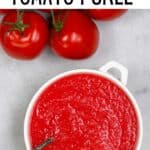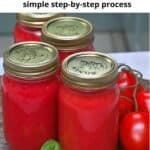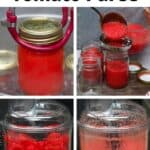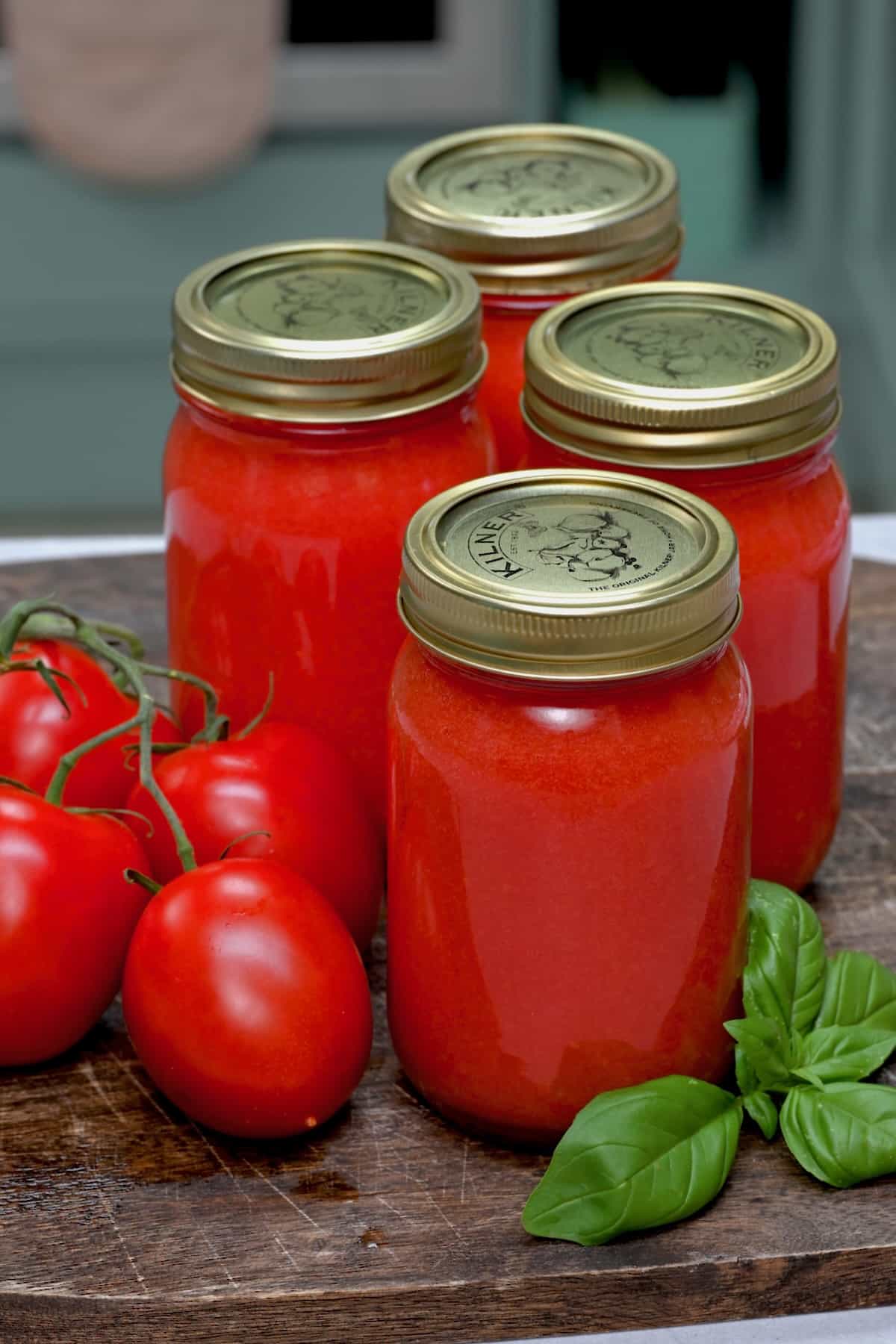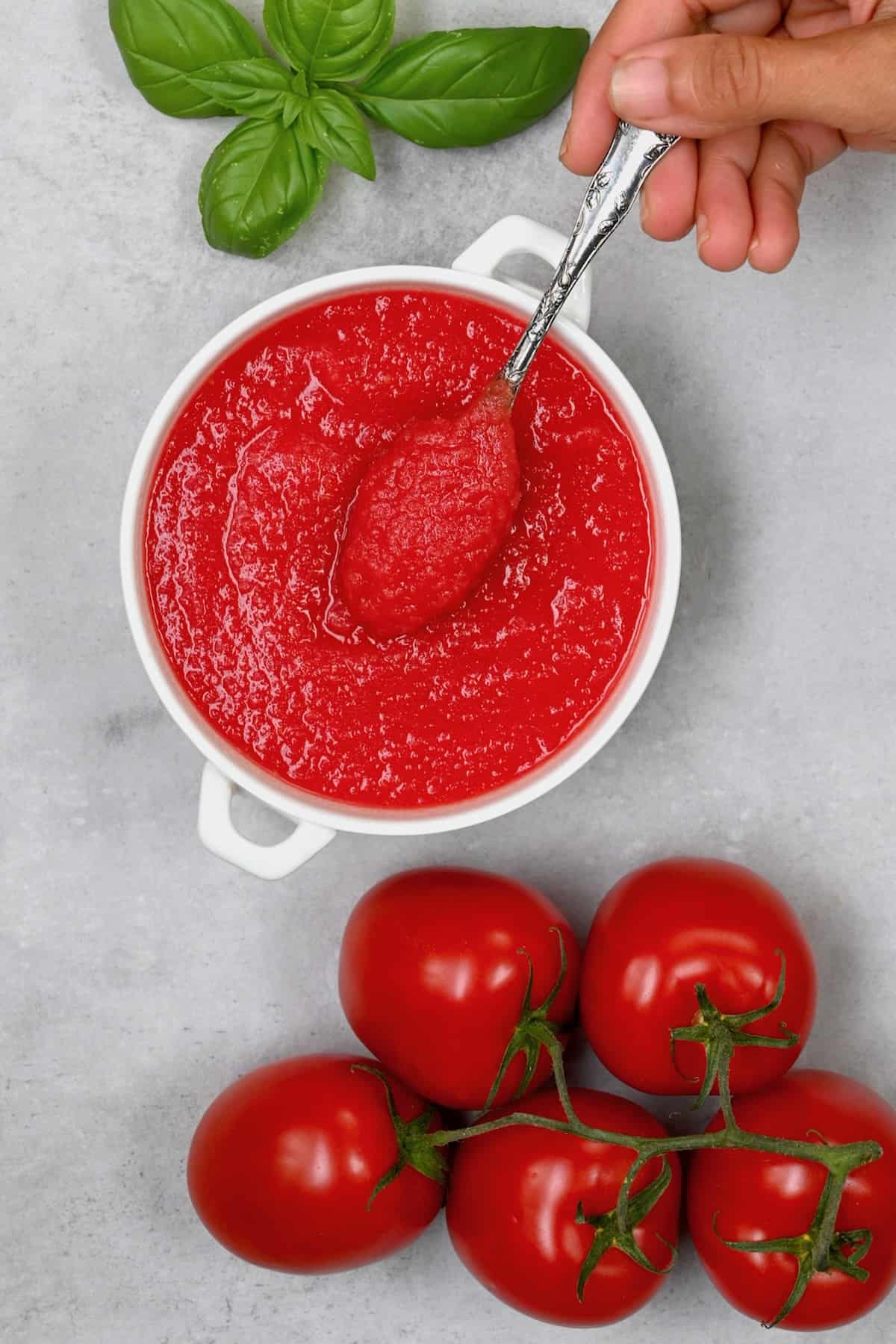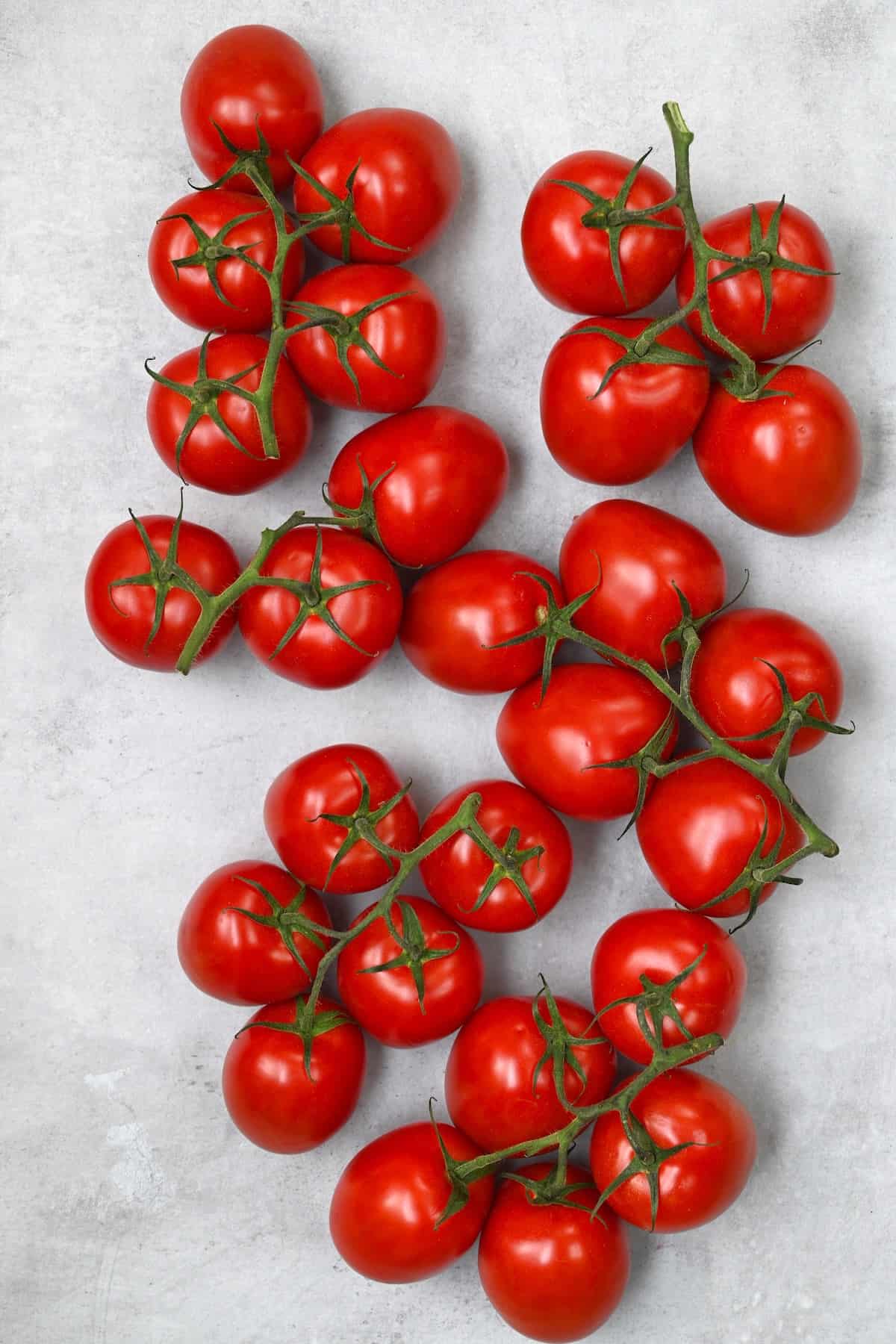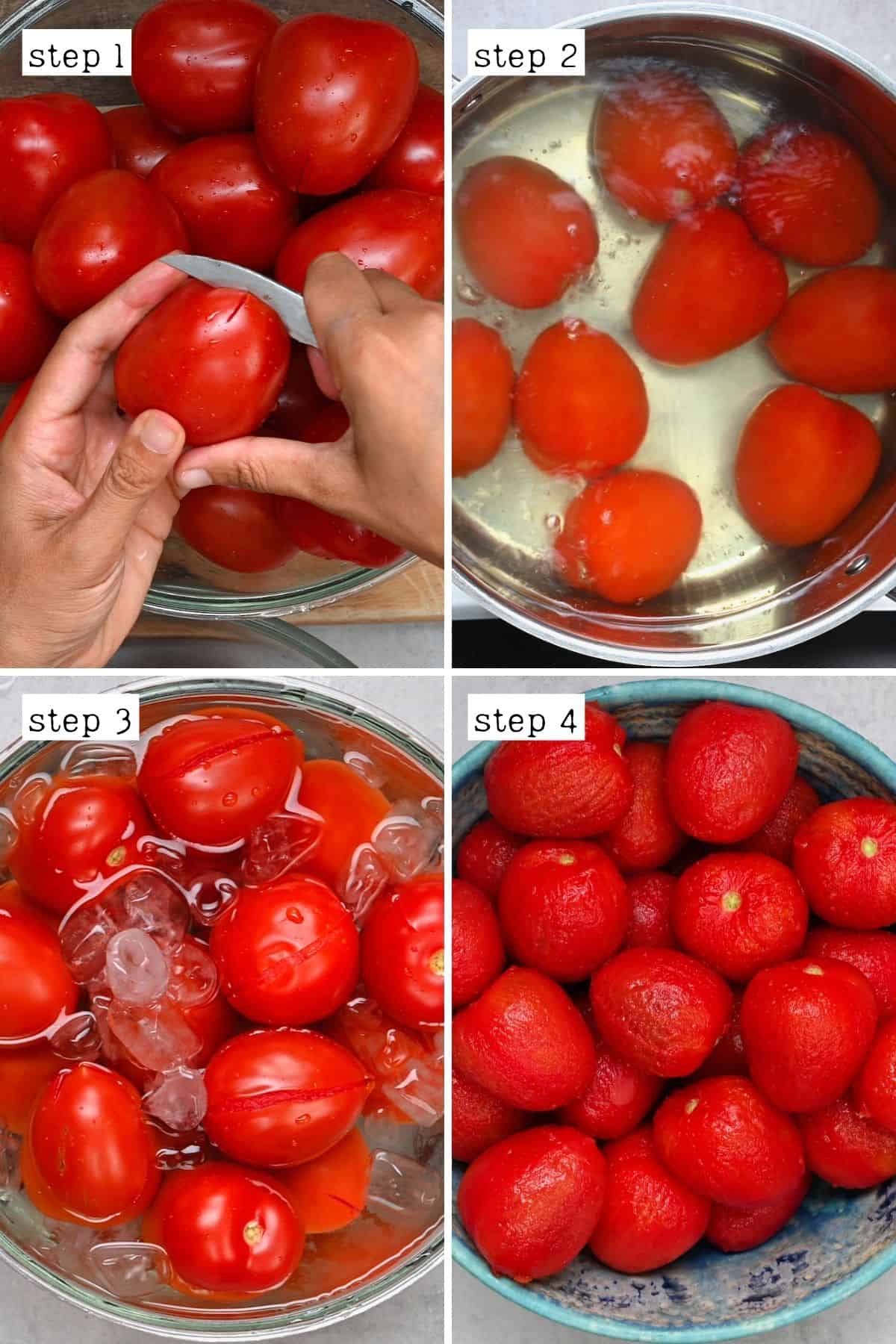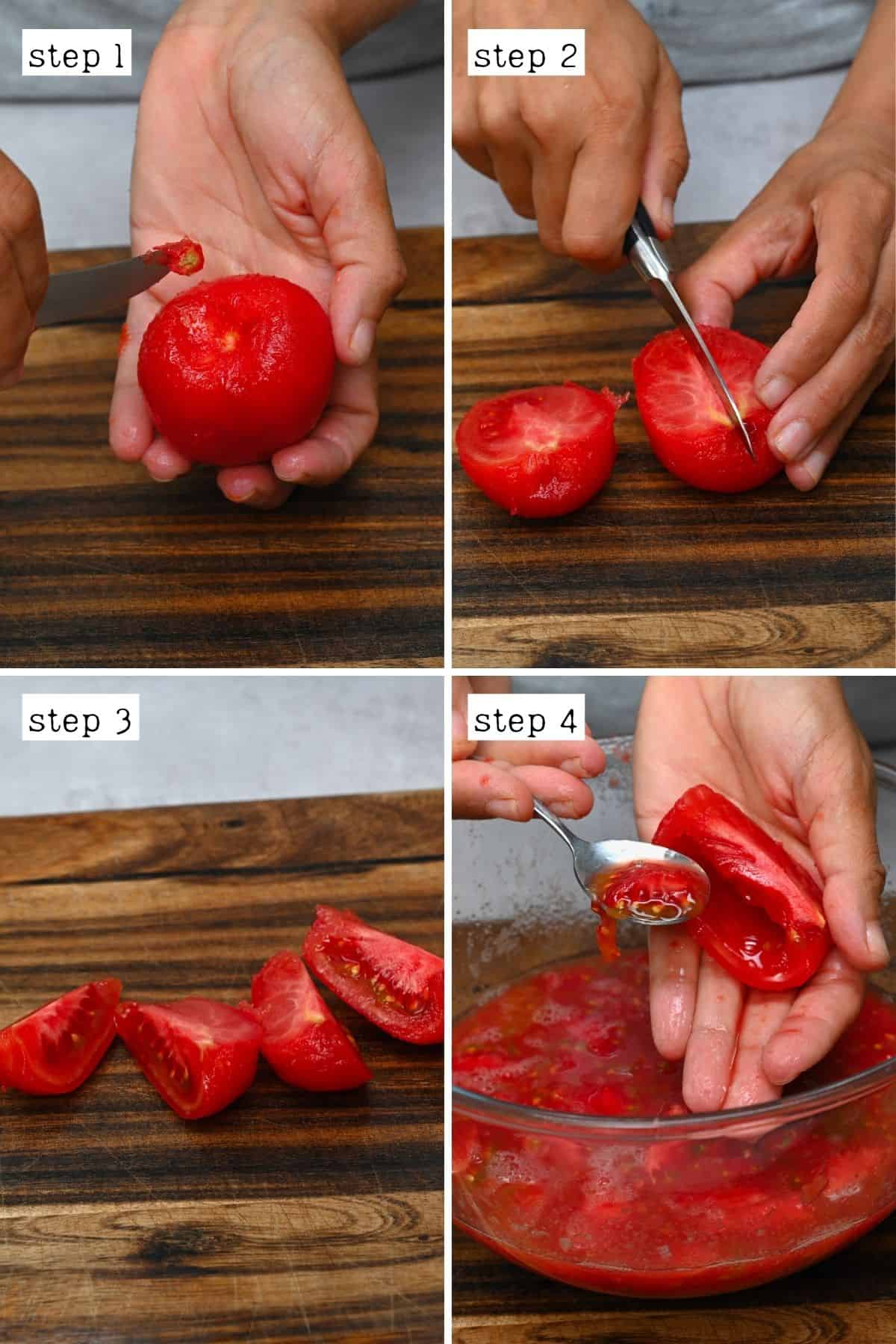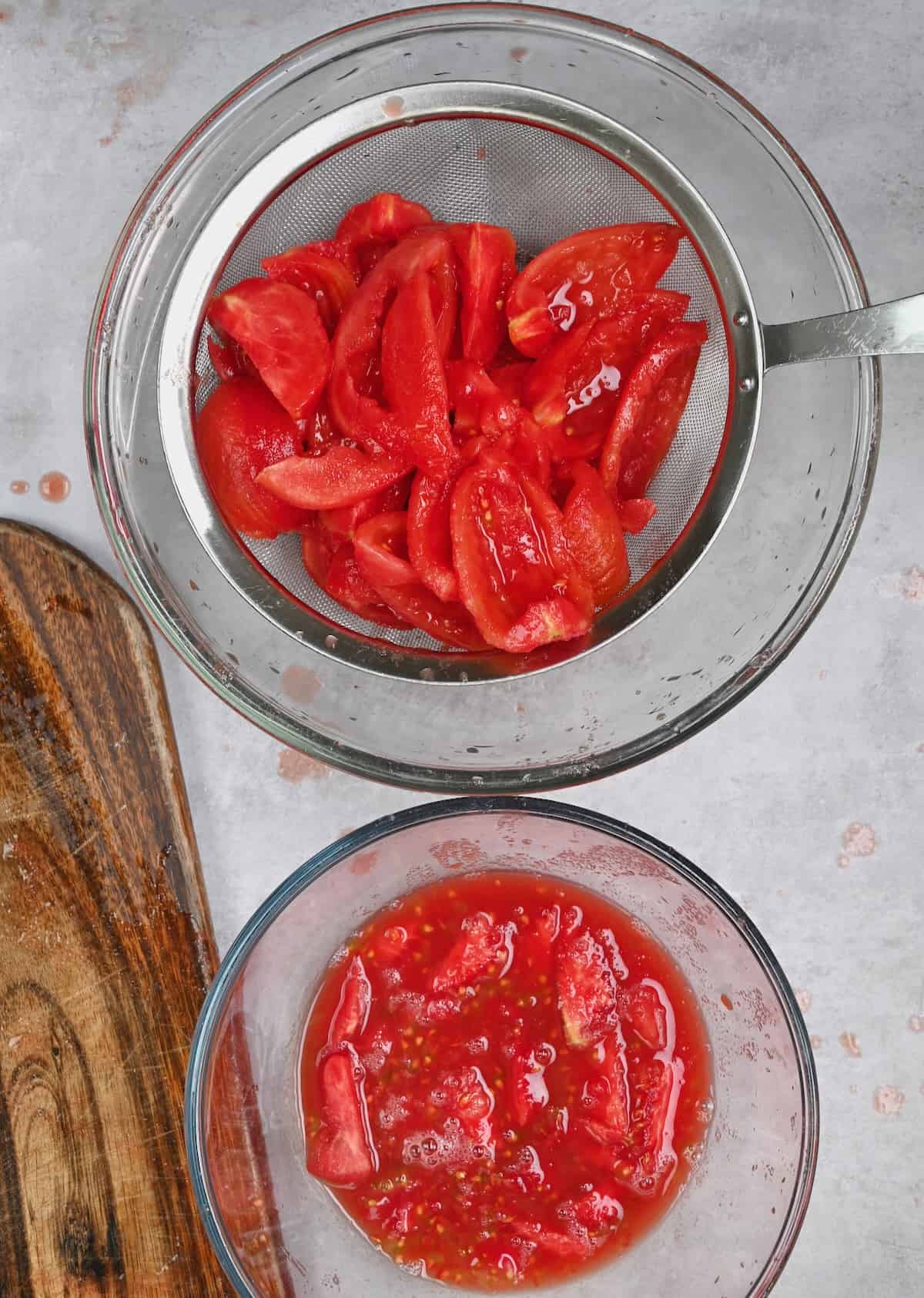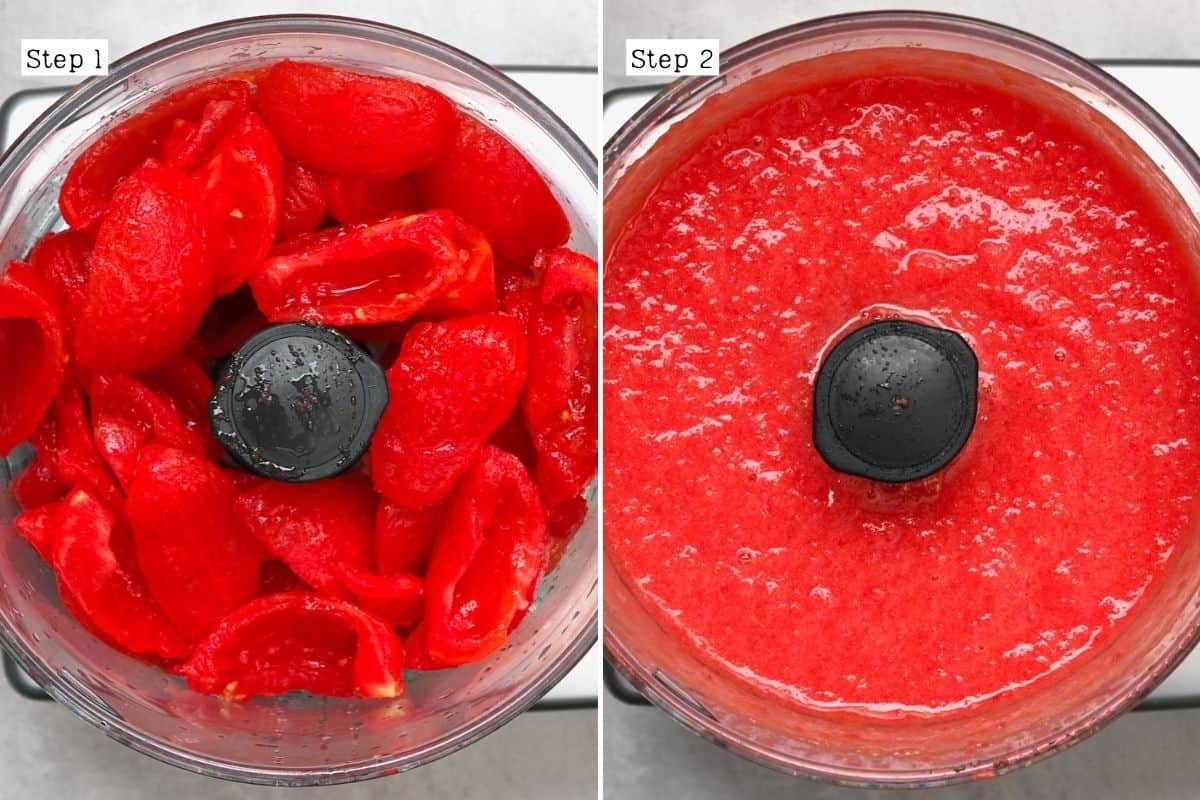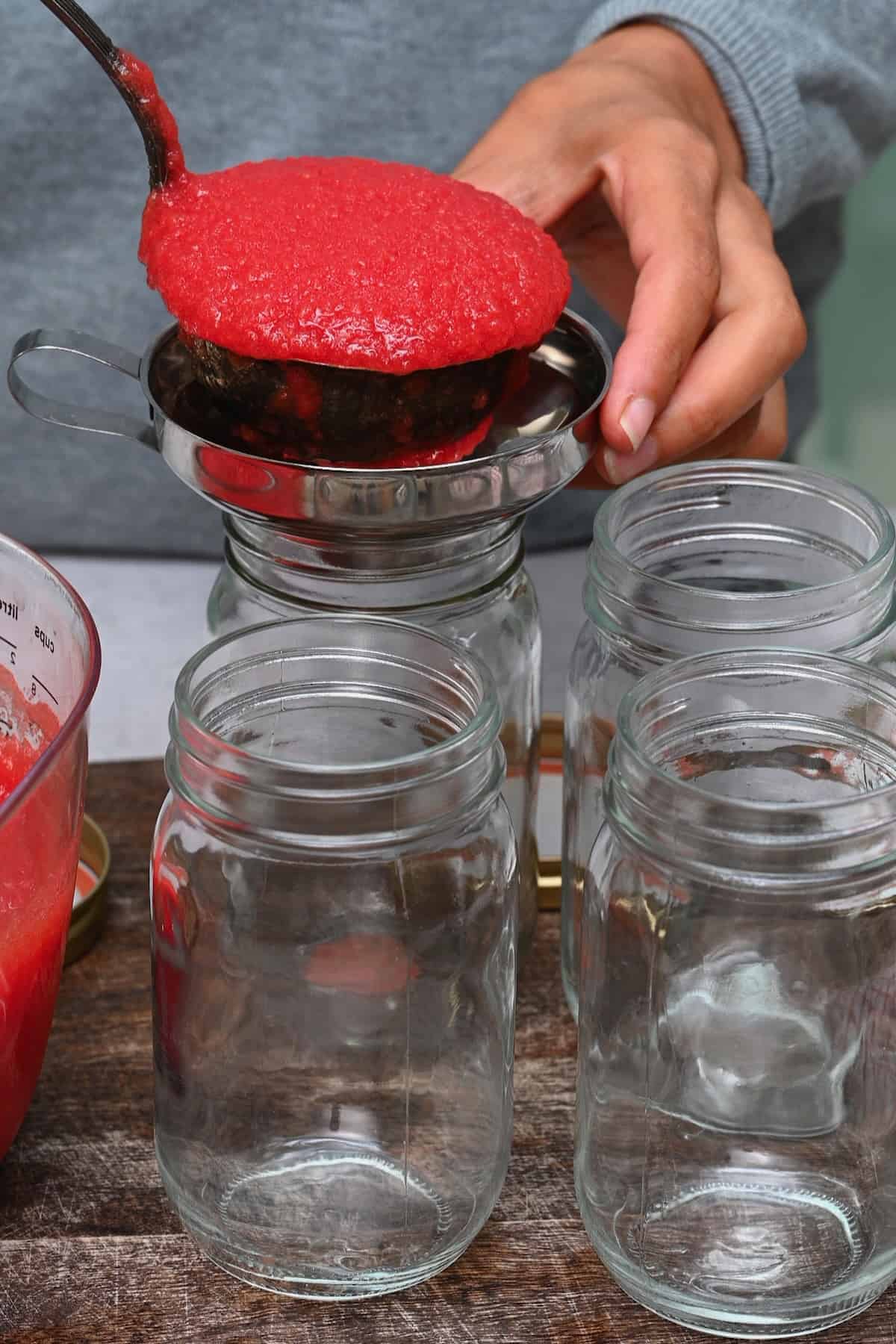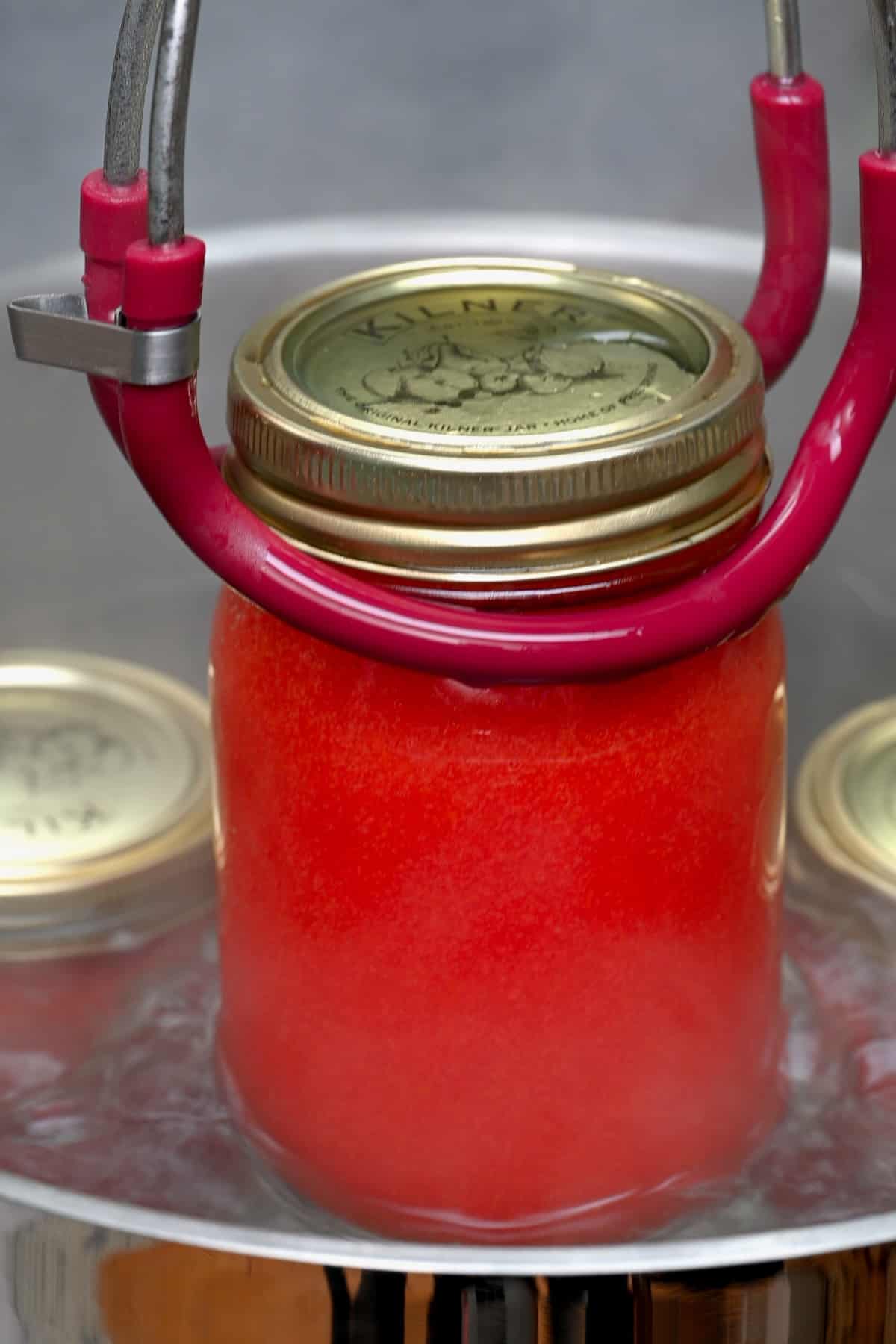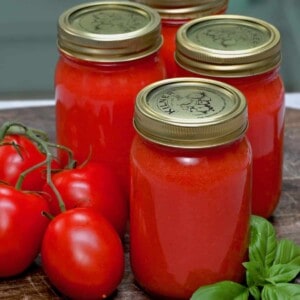Whether you’re growing tomatoes or have lots leftover in your kitchen that need to be used, homemade tomato puree is a basic cooking “essential” that you can prepare with very little effort, perfect for making the most of delicious ripe, in-season tomatoes to last all year long. What is tomato puree? It’s exactly what it sounds like: tomatoes that have been pureed into a smooth sauce. Some versions simmer the tomatoes first, but at its most basic, it’s pureed raw tomatoes. Following this method, you only need to use a food mill OR blanch and peel, de-seed, then puree tomatoes with a blender or food processor (no simmering required!). Once prepared, this sauce provides a delicious tomato flavor to soups (like minestrone), stews, sauces (like my homemade pizza sauce or homemade stovetop or roasted tomato sauce), condiments (like BBQ sauce or homemade ketchup), salsas, Bloody Marys, and more.
Choosing the Right Tomatoes for Tomato Puree
Unsurprisingly, the best tomato puree recipe is made using the best tomatoes. That means ensuring they’re ripe and in season for the best flavor and quality. However, homemade tomato puree is also a great way to use slightly bruised tomatoes – just cut away the imperfections first. In terms of the best varieties, I highly recommend using Plum tomatoes, San Marzano, or Roma tomatoes, which are generally used for tomato puree, paste, sun-dried tomatoes, etc. They have a meaty flesh and lower water content than other varieties, meaning they have a richer, more robust flavor and thicker consistency. However, technically, any variety will work.
Tomato Puree Vs Sauce
While the two can be similar when comparing commercial tomato puree (which usually cooks the tomatoes into a thicker, more concentrated flavor and consistency) and sauce, there are still a couple of key differences. Primarily, that tomato sauce often combines pureed tomatoes with extra flavorings – like garlic, onion, and various herbs and spices. Meanwhile, the puree is comprised entirely of tomatoes.
How to Make Tomato Puree
To make fresh tomato puree, first wash and quarter all the tomatoes, then either: Pass the tomatoes through an electric strainer or food mill, which will naturally strain out the core, seeds, and peel. – OR – First, blanch and peel the tomatoes. Then, slice them in half, remove the core, stem end, and seeds, and chop them finely with a sharp knife. Then, transfer the tomatoes to a colander over a bowl and leave them to stand for 15 minutes to drain excess liquid. Finally, transfer the remaining tomatoes to a food processor/blender (or use an immersion blender) and blend them into a puree. If you find the consistency of the puree a little too thin, allow it to reduce slightly on the stovetop to your desired consistency/texture and taste. Alternatively, to skip the blanching/peeling steps, chop the tomatoes into small pieces, bring them to a boil, and then simmer for 10-15 minutes until they soften. You can then puree the tomatoes and press them through a fine-mesh sieve to remove the seeds/peel/pulp.
Storing Homemade Tomato Puree
How long does tomato puree last in the fridge? It’s best to use it within 7-10 days when stored in a sterilized, airtight container (like a jar) in the refrigerator. Add a little salt or lemon juice as natural preservatives. Can you freeze it? Absolutely! Spread the puree flat in a freezer-safe Ziplock bag (or in ice cube trays) and freeze it for up to 6 months, though it’s best within the first 3. You can cook it from frozen or allow it to thaw in the refrigerator/on the counter first.
How to Water Bath Can Tomato Puree?
Canning tomato puree is the best way to capture the sunny in-season flavor to enjoy all year.
First, add 1 Tbsp of bottled lemon juice or ¼ tsp citric acid to the bottom of each (sterilized and warm) pint jar. This is important to ensure the pH level is acidic enough for safe canning. Ladle or pour the heated puree (heat to just below boiling level) into sterilized jars, leaving ½-inch (1 cm) headspace, tapping them against the counter to remove any air bubbles.
To heat the jars, leave them in the canner while bringing the water to an almost boil.
Wipe the jar rims with a clean kitchen towel, then place the lid over the jar, screwing the band until fingertip-tight. Transfer the jars to the prepared canner (add a trivet to the bottom or a large, deep saucepan/canner filled with enough water to cover the jars by an inch) and bring the water to a boil. Once boiling, immediately add the lid and process for 30 minutes (adjust based on your altitude – see my step-by-step guide to water bath canning for beginners), then remove the lid and allow them to sit for 5 minutes. Carefully remove the jars from the boiling water and transfer them over a clean kitchen towel to fully cool. Finally, check the seal, and store the canned puree in a cool, dark location for up to 18 months.
Reprocess any that haven’t sealed with new jars/lids OR transfer them to the fridge to use sooner.
More Simple Tomato DIYs
How to make sun-dried tomatoes How to make tomato juice: 3 methods Homemade tomato paste Homemade tomato confit
If you try this easy tomato puree recipe, let me know how it goes in the comments below. I’d appreciate a recipe card rating and would love to see your recipe recreations – tag me on Instagram @Alphafoodie!
